Tools for the job
Firstly, lets take a look at a few basic types of drill bit for metalworking.
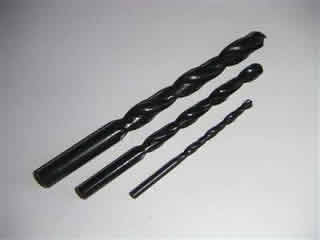
HSS Jobber drills, probably the most common of all. Usually sold in sets from 1mm to 10 or 13mm. They can also be used for woodworking. If you want to successfully drill metal it is essential that these are kept sharp. Often ones supplied free with drills are useless. It is worth investing your money in a set of reasonable quality ones.
You will need a reasonably powerful drill to turn these, something around 750watts or bigger, and not well suited to drilling thin sheet metal.
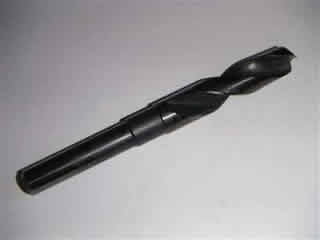
For larger holes 13.5mm to 20mm HSS drill bits are available with smaller shanks that will fit into a normal 13mm drill chuck. These are often referred to as ‘Blacksmiths drills’.
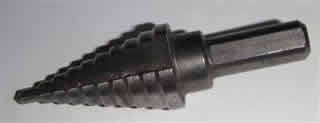
For holes in thin sheet metal up to 3mm thick, a ‘step drill’ is a great choice. It will produce a fairly clean hole. Excellent for car bodywork. Very simple to use. First drill a pilot hole, some step drills will have a pilot built into the end.
Then drill through, pushing each step through until you reach the step that is the size you want. These will need to be used with your drill set on a fairly low speed, and always with plenty of lubrication. Another option is a cone drill. Very similar to the step drill, except that is tapers rather than having steps.
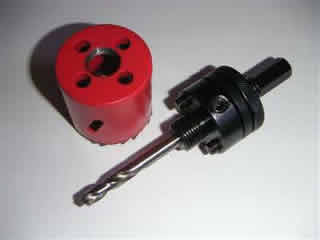
Hole saws are also used for drilling larger diameter holes. Suitable for thicker material than a step drill.
Available in many sizes from about 16mm to 150mm diameter. You will also require an arbour to use these. They come in two types, the first simply screws into the hole saw tight. The second, for sizes above 35mm, screws in until about half a turn from tight, then a collar with 2 pins is screwed down. This prevents the arbour from jamming into the hole saw. One of the best ways to buy hole saws in in a kit, a selection of sizes and usually both types of arbour.
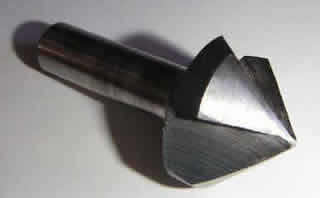
Countersinking will require a very slow speed and quite a lot of pressure. Lubrication is essential. Once you have drilled your hole use a ‘countersink’ to make the recess for the countersunk screw head. You will need to hold your drill as square to the job as possible to make an even countersink. You will need a HSS countersinking bit. Again this will be able to be used for woodworking. A carbon steel ‘rose’ countersink will not be of any use.
If you need to countersink holes in thin sheet metal it is a good idea to drill the holes slightly smaller than you will need, as the countersink will make them slightly larger.
Lubrication is needed quite frequently for drilling metal, there are a few different one available.In liquids, aerosols and pastes. Apply it liberally to the cutting tool as required. If you have only a couple of holes to drill, a brush of clean engine oil or a drop of 3in1 oil is better than nothing.Penetrating oils, such as WD40 are not cutting oils.All of these types of tool are okay for use on steel, aluminium and stainless steel with the correct speeds and lubrication.
As a general rule, the larger the diameter of the bit, the slower the speed. Stainless steel will require significantly slower speeds than steel, but aluminium slightly faster.
Article written by Hitch



